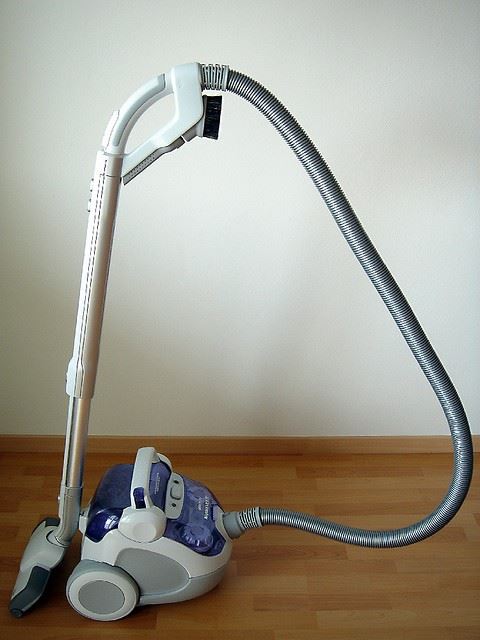Next Day Delivery Available
History Of The Vacuum Cleaner

Image by butjkaj.com
Those of us of a certain vintage will remember the immortal Shake ‘n Vac ad, in which a middle-aged housewife got suspiciously enthusiastic about whipping out the vacuum for a spot of mid-afternoon cleaning. Adverts have moved on since then – and so have the vacuums.
And come to think of it, so have the way in which we use vacuums – our first attempts at cleaning things involving hanging rugs over a wall or a line and giving it a thorough thrashing with a carpet beater to get all the dirt out.
Here’s how the vacuum started – and how it’s ended up.
The Original Sweeping Machine
A “sweeping machine” was patented by inventor, Ive McGaffey, in June 1869 in the United States; and whilst not motorised, it was, however, a device that cleaned rugs. Impressively and imposingly called the Whirlwind, it was made of wood and canvas and officially constituted the first hand-pumped vacuum cleaner.
The British Standard
Born in Gloucester, England, Hubert Cecil Booth patented a motorised vacuum system in August 1901. His machine was a large, horse-drawn, petrol-driven unit which he parked outside the building that needed to be cleaned and sucked out the dirt through a series of hoses fed through the windows.
His inspiration came from an American inventor he saw showcasing a cleaning machine designed to clean railway carriages. Ostensibly a box with a bag on top, the original invention blew on objects to get
the dust to fly out. Booth’s suggestion and eventual modification was to have a device that sucked the dust out.
Smelly, noisy, extremely bulky, and, to a certain degree, unsuccessful, his vacuuming device nevertheless established the basis and set the model for the vacuum cleaners to follow.
Door-To-Door Vacuuming
St Louis salesman, John Thurman, started his own horse-drawn, door-to-door vacuuming service in 1903. A canny businessman, he charged $4 for each visit. His originally created his vacuum cleaning device in 1899 – still argued by some historians to be the first ever motorised vacuum cleaner. It was finally patented in 1899 – after which Thurman saw the promise and profit his invention could garner him.
Hot On The Heels
Two American inventors who did follow Booth’s example were Corinne Dufour and David Kenney, who, respectively, created a device that sucked dust into a wet sponge, and a gargantuan machine fitted in the cellar that cleaned each room of the house through a labyrinthine network of pipes.
The Evolution Continues
The evolution of the vacuum cleaner took another significant evolutionary step in 1907 when James Spangler, a janitor working in an Ohio department store, realised that the source of his chronic cough came from the carpet sweeper he was using.
The result of this discovery was that he messed around with an old fan motor and attached it to a soap box stapled to a broom handle with a pillow case serving as the dust collector. The portable, electric vacuum cleaner was born.
And through a series of adjustments and modifications, he adapted it even further to incorporate a cloth filter bag and cleaning attachments. He was granted a patent for the device in 1908.
Enter Mr Hoover…
Hot on the heels of his revolutionary rendering of the original vacuum model, it wasn’t long before Spangler set up his own company, the Electric Suction Sweeper Company. One of his first customers was his cousin, whose husband was none other than William Hoover – to become the founder and president of the Hoover Company. Spangler sold his patents rights to Hoover, and continued to create vacuum deigns for him.
New And Improved
From this point on, Hoover made his own adjustments and improvements to Spangler’s original vacuum cleaner design, leading to their manufacture of the first commercial bag-on-a-stick upright vacuum cleaner.
Hoover was indeed a prudent business man and, after initial sales of the revamped product were less than impressive, he introduced a 10 day home trial – now standard practice for many suppliers and products – which led to many satisfied customers and a massive increase in sales.
By 1919, Hoovers proud slogan was “It beats as it sweeps as it cleans”, with extensive manufacture and distribution.
Further Innovations, The Present And Beyond
The filter fibre disposable bag was introduced and launched in 1920 by the Airway Sanitizor Company, an addition that very successfully lasted for many years until James Dyson invented the Cyclon, the first bag-less dual cyclone machine. With its wry slogan “Say goodbye to the bag”, it became the fastest selling vacuum cleaner ever manufactured in the UK and is now one of the most popular brands in the UK.
So the question is: where do we go from here? The vacuum cleaner has gone from cumbersome, occasionally ineffective origins to being a sleek, sophisticated household cleaning apparatus.
Who knows what the future of the vacuum holds?
By Lee Gilbert
Category: Articles, News & Tips






 By Lee Gilbert
By Lee Gilbert On 5th Sep 2013 at 10:37
On 5th Sep 2013 at 10:37

No Comments